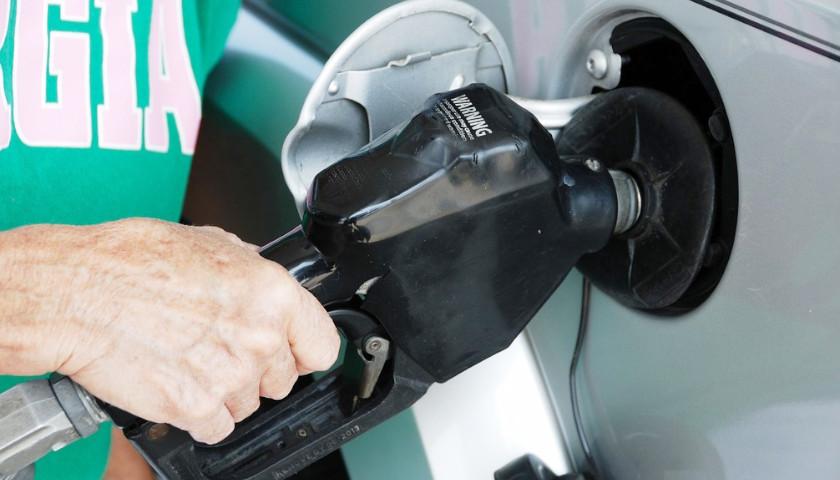by Kenneth Schrupp
California gas prices could rise by at least $1.11 per gallon by 2026 if the California Air Resources Board adopts amendments to its low carbon fuel standard program, CARB says. The LCFS amendments proposed at the end of 2023 would phase-out credits for turning manure into renewable natural gas, ending that business, and add jet fuel to LCFS purview, increasing flying costs for every flight that starts or ends in California even if the fuel was purchased elsewhere. Because so much of America’s imports come in through California, the LCFS amendments would raise the costs of goods for every American.
LCFS uses a system of credits and deficits to reward or punish producers that make fuel better or worse than the rising “clean” standard.” Current LCFS guidelines call for a 20% reduction in carbon intensity by 2030 compared to 2010, while the proposed amendments call for a 90% reduction by 2045, including significant step-downs starting in 2025 that would result in major fuel cost increases starting that year.
That’s why LCFS estimated pass-through costs increase gasoline and diesel costs per gallon by 12 cents and 14 cents respectively in 2024, while jumping to 47 cents and 59 cents in 2025. 2025 would also mark the introduction of a new LCFS tax on jet fuel that would make flying in and out of California more expensive and add an estimated 44 cents per gallon for jet fuel not only purchased in California, but also used in flights that go to California.
Because fuel costs are about 20-30% of airline operating expenditures, an increase in fuel costs can have a major impact on ticket costs, as airlines must budget for profit. LCFS says it aims to drive adoption of “sustainable” aviation fuel by taxing standard jet fuel more. The new fuel costs approximately 40% more than fossil jet fuel.
“With respect to policies increasing the cost of intra-state air travel, this is especially unfortunate given the state’s failure to complete high-speed rail in 2020, as originally expected,” said Cato Institute policy analyst Marc Joffe to The Center Square. “It might be one thing to ‘nudge’ travelers onto less carbon intensive travel modes, but the state has nothing to nudge them to for the foreseeable future.”
Given that transportation accounts for approximately 7% of a typical good’s cost, significantly increasing diesel, jet fuel, and gasoline costs would likely result in higher prices for most goods being transported through California. The Port of Los Angeles alone accounts for 37% of all American imports, and the flow of goods from Mexico via NAFTA/USMCA.
CARB staff note “this potential price increase may impact low-income, disadvantaged, and rural communities more than other consumers of fossil fuels, because individuals living in these communities traditionally spend a larger share of their income on transportation fuels,” but say this can be mitigated by subsidizing alternative energy vehicles.
Another California rule being considered by the California Energy Commission, which would place a cap on profits by in-state refineries, could make fuel in the state even more expensive. California politicians say refiner “greed” is to blame for spikes in fuel costs when one of the state’s nine refineries goes down for maintenance, while refineries note they operate at 99.7% of operating capacity and have little incentive to expand capacity due to the state’s costs of compliance and phase out of fossil fuels. CARB estimates the new LCFS amendments could add over $1 billion in new operating costs per refinery starting in 2025.
When combined with the proposed refinery profit cap, gas produces prices will, ironically, have nowhere to go but up as supply goes down.
“We do not believe this policy would lower the price of gasoline at any link in the supply chain,” wrote Chevron in opposition to the rule under consideration. “Rather, it would likely reduce gasoline supply and discourage refiner investment in California – resulting in higher prices, a decreased and less reliable fuel supply, and increased reliance on imports.”
“At Chevron, we are deeply concerned the state is threatening energy affordability and reliability by pursuing misguided, command-and-control rules that would make living and driving in California even more expensive,” continued Chevron staff member Ross Allen to The Center Square.”
Joffe warned that these high costs for transporting goods in California could lead to further outmigration of individuals from the state. With outgoing residents more likely to be net tax payers, and newcomers more likely to be net government beneficiaries, a rising cost of living could worsen the state’s up to $80 billion budget deficit.
“California has suffered heavy outmigration in large part due to the high cost of living,” Joffe continued. “Putting refineries out of business through price controls and increased costs will just make it more expensive for middle income residents to continue living here.”
CARB was supposed to have a public hearing on the proposed LCFS amendments in March, but that hearing has since been postponed without a new hearing date set. There is no CEC vote currently set for the refinery profit cap rule.
– – –
Kenneth Schrupp is the California reporter for The Center Square. His commentary and analysis have been published by Newsweek, RealClearPolitics, and the Pacific Research Institute.





